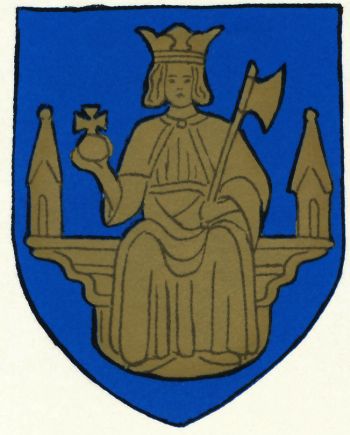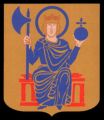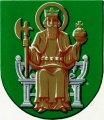Category:Saint Olaf: Difference between revisions
Knorrepoes (talk | contribs) No edit summary |
Knorrepoes (talk | contribs) No edit summary |
||
| Line 1: | Line 1: | ||
{| class="wikitable" | {| class="wikitable" | ||
|- style="vertical-align:top;" | |- style="vertical-align:top;" | ||
|[[File: | |[[File:jomala.jpg|center|350 px|alt=Heraldic glossary:{{PAGENAME}}]] | ||
| | | | ||
<center>''' {{uc:{{PAGENAME}}}} '''</center><br> | <center>''' {{uc:{{PAGENAME}}}} '''</center><br> | ||
Latest revision as of 11:14, 23 March 2024
Do you know a translation ? |
Olaf II Haraldsson (995 – 29 July 1030), later known as St. Olaf, was King of Norway from 1015 to 1028. He was posthumously given the title Rex Perpetuus Norvegiae (English: Norway's Eternal King) and canonised in Nidaros (Trondheim) by Bishop Grimkell, one year after his death in the Battle of Stiklestad on 29 July 1030. His remains were enshrined in Nidaros Cathedral, built over his burial site.
Olaf's local canonisation was in 1164 confirmed by Pope Alexander III, making him a universally recognised saint of the Catholic Church. The exact position of Saint Olaf's grave in Nidaros has been unknown since 1568, due to the Lutheran iconoclasm in 1536–37. Saint Olaf is symbolised by the axe in Norway's coat of arms, and the Olsok (29 July) is still his day of celebration. The Order of St. Olav is named after him. (Source Wikipedia)
Heraldic glossary Items in the glossary: 2,873 |
Part of : Heraldry of the World |
Examples
By clicking on an image below, it will be enlarged. To go to the page(s) where the image is being used, follow the links under the heading File usage at the bottom of the image page.
Media in category "Saint Olaf"
The following 3 files are in this category, out of 3 total.
- Jomala.jpg 350 × 435; 25 KB
- Norrkopi.jpg 276 × 319; 20 KB
- Ulvila.jpg 400 × 460; 36 KB





